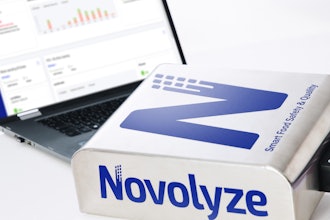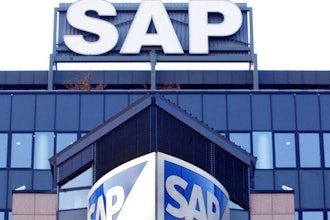
 Jeff Ready
Jeff ReadyManufacturing sits proudly at the heart of the U.S. economy and, in 2018, the industrial revolution continues its charge with sustained IT innovation and automation. Where factory floor employees used to print off component lists for product assembly, they now barcode scan for the designs and quickly locate parts in the warehouse.
‘Smart’ IoT sensors collect data about everything from factory temperature to light and airflow, and they feed that data into algorithms that can intelligently improve efficiency by automatically adjusting temperature, vents and blinds to minimize solar loss in unoccupied areas. Further, these data-driven algorithms can simultaneously improve both safety and productivity; for example, by slowing machine speeds when workers approach and increasing those same speeds, and thus production, when no one is close by.
Productivity gains have naturally followed these and other innovations, but this increased dependency on technology means the infrastructure—the servers, networks and storage that ingest the data and run the critical algorithms—must be lightning fast and extraordinarily resilient. If the algorithms don’t run, the blinds stay up and the machines run dangerously. This has put a new burden on IT administrators: that of deploying and managing highly available infrastructure on the factory floor, where often no on-site personnel exist and traditional datacenter resources are scarce.
We are entering a world of “edge computing” where critical infrastructure deployed en masse, and in unusual environments close to the data, must run—and stay running—autonomously.
The global edge computing market is expected to reach $6.72 billion by 2022, according to MarketsandMarkets. Edge computing and cloud computing go hand-in-hand, and should be at the forefront of thought for IT leaders. Yet in many instances, manufacturing businesses only contemplate edge computing as a solution when their legacy servers reach end-of-life. Whether in proactive thinking or tied to traditional server refresh, edge computing is coming fast for manufacturing. This article takes a look at some of the benefits, and examines how the edge computing technology is improving productivity in the manufacturing sector.
Disaster Recovery, Speed and Resiliency
Factory production facilities need reliable on-premises edge computing resources that can gather and process IoT data and maintain the pace of production. Latency that arises from network bottlenecks or sluggish broadband connections to cloud-based data centers may provide suboptimal performance or introduce a layer of poor reliability that is unacceptable. If the link to the internet goes away, can the factory afford to stop production? Of course not. Sensors and algorithms must react in real time, and therefore must exist within the factory itself, to avoid such outages.
That’s not to say that cloud-based computing doesn’t have a place in the manufacturing sector; far from it. Edge computing systems should integrate with cloud environments to create a hybrid edge-cloud infrastructure. Applications, data, logs and the like generated at the edge can and should be linked back to the cloud, whether private or public. Likewise, resources that exist primarily in the cloud should be tied back to the edge to ensure production continues even if cloud availability is interrupted for a time.
It is still vital for the manufacturing sector that production data remain highly available at the factory, to maximize uptime not just for the applications, but also for the factory itself. For this reason, IDC research predicts that by 2019, 45 percent of IoT-created data will be stored, processed, analyzed and acted upon at the edge, with over six billion devices connected to an edge computing solution.
Security and Compliance
Beyond bandwidth and latency, transferring data between manufacturing factory sites, across states or between countries potentially exposes businesses to cyberattacks and increases the risk of security breaches. Laws and regulations can vary from country to country, making this an even more complex problem for global manufacturers. A proper edge-cloud hybrid environment can help here.
First, with an edge computing environment, local computing resources can preprocess data and filter sensitive information out, sending only the necessary data that assists with data modeling to the cloud. Second, an environment that spans from edge-to-cloud as one unified system can greatly simplify security by having a homogeneous environment at both ends (what provides security at the edge also works in the cloud, and vice versa). In this way, manufacturers can create the kind of strong framework that is essential for full enterprise security, regulatory compliance and audits.
For manufacturing companies with multiple sites, virtualized edge computing resources also provide the means to strengthen disaster recovery strategies. As described above, one method is to use an edge-to-cloud integration to provide for application availability. Another method is to utilize different physical sites to provide DR and failover for applications by replicating and mirroring data between each of the different sites over a private, secure network. This should be definable on a per-application basis, meaning that it may make sense for application A to failover to a different factory site, while application B instead heads to the cloud. This sort of flexibility is critical, especially when you may have many different edge deployments running a wide variety of applications.
Lower Costs
Edge computing also opens the doors to cost-effective IoT adoption and deployment. Until now, many companies in the sector have resisted full-scale IoT adoption because of the upfront costs associated with network bandwidth, data storage and processing power. This has been further complicated by differing proprietary control and management mechanisms from IoT vendors. Edge computing offers a cost-effective way to scale up IoT adoption by providing a standard platform for running applications as virtual machines or containers, and can provide the high-availability those applications demand without being housed in a traditional datacenter. Only by streamlining in this way can the full value of the edge be obtained, as the edge is not one location but likely many small deployments, each being a full IT infrastructure in and of itself.
Further savings exist because these environments are designed to run autonomously, without dedicated IT staff at each site. These edge infrastructures must be easy to deploy onsite and to manage and monitor remotely. The right solution then provides local onsite high availability by detecting, mitigating and recovering from failures, such that these critical applications will remain running even in the event of a hardware outage. This allows for the factory to continue production even when no IT staff is immediately available, thus saving on headcount.
Edge computing is set for high growth in the future, and will dramatically improve daily operations for many industries, especially manufacturing. In the coming months, many more factories and plants will adopt edge computing due its ease-of-use, high availability and low latency. Edge computing can tie back into the cloud, and in some cases even replace the cloud—but it’s not the edge versus the cloud; instead it’s edge and cloud.
Such an environment provides maximum flexibility for the manufacturer. While the edge has key advantages such as local computation and faster decision-making, the cloud brings the power of large data set computation, predictive and machine learning and artificial intelligence algorithms. Used together with the right applications and hardware, edge computing and the cloud can produce a powerful and streamlined IT solution for the manufacturing sector.
Jeff Ready is CEO and co-founder at Scale Computing.























